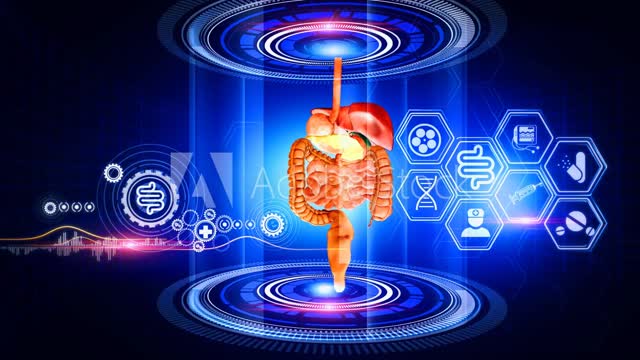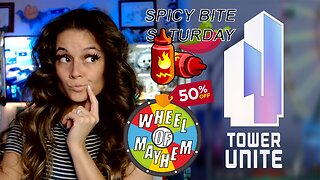Premium Only Content

Digestive System "How the Digestive System Works ?
http://ceesty.com/eds9Cq
The food you eat makes an incredible journey through your body, from the top (your mouth) to the bottom (your anus). Along the way the beneficial parts of your food are absorbed, giving you energy and nutrients. Here’s a step-by-step account of the digestive system’s workings.
OVERVIEW
Structure of the Digestive System
What is the digestive system?
Your digestive system is made up of the gastrointestinal (GI) tract and your liver, pancreas, and gallbladder. The GI tract is a series of hollow organs that are connected to each other from your mouth to your anus. The organs that make up your GI tract, in the order that they are connected, include your mouth, esophagus, stomach, small intestine, large intestine, and anus.
What does the digestive system do?
Your digestive system is uniquely constructed to do its job of turning your food into the nutrients and energy you need to survive. And when it’s done with that, it handily packages your solid waste, or stool, for disposal when you have a bowel movement.
Why is digestion important?
Digestion is important because your body needs nutrients from the food you eat and the liquids you drink in order to stay healthy and function properly. Nutrients include carbohydrates, proteins, fats, vitamins, minerals, and water. Your digestive system breaks down and absorbs nutrients from the food and liquids you consume to use for important things like energy, growth, and repairing cells.
ANATOMY
What organs make up the digestive system?
The main organs that make up the digestive system (in order of their function) are the mouth, esophagus, stomach, small intestine, large intestine, rectum, and anus. Helping them along the way are the pancreas, gall bladder, and liver.
Here’s how these organs work together in your digestive system.
Mouth
The mouth is the beginning of the digestive tract. In fact, digestion starts before you even take a bite. Your salivary glands get active as you see and smell that pasta dish or warm bread. After you start eating, you chew your food into pieces that are more easily digested. Your saliva mixes with the food to begin to break it down into a form your body can absorb and use. When you swallow, your tongue passes the food into your throat and into your esophagus.
Esophagus
Located in your throat near your trachea (windpipe), the esophagus receives food from your mouth when you swallow. The epiglottis is a small flap that folds over your windpipe as you swallow to prevent you from choking (when food goes into your windpipe). A series of muscular contractions within the esophagus called peristalsis delivers food to your stomach.
But first, a ring-like muscle at the bottom of your esophagus called the lower esophageal sphincter has to relax to let the food in. The sphincter then contracts and prevents the contents of the stomach from flowing back into the esophagus. (When it doesn’t and these contents flow back into the esophagus, you may experience acid reflux or heartburn.)
About Us https://bit.ly/3GUPFOa Contact: +919942258153 kvk.subadhra@gmail.com
Thank You Very Much for Sharing YourValuable Thoughts
https://www.digistore24.com/redir/283755/CHUS87/
-
 11:18
11:18
Dr Disrespect
2 days agoDr Disrespect: THE BEST AND WORST OF GAMESCOM 2025
113K20 -
 2:10:12
2:10:12
Badlands Media
1 day agoDevolution Power Hour Ep. 383: Epstein, Durham, and the Dictator Narrative
87.4K55 -
 2:40:10
2:40:10
DLDAfterDark
9 hours ago $0.36 earnedDLD Live! Feat. Red Dawn Readiness! Glock FRT's - Striker Fire Safety Concerns - ACE Trigger
28.6K4 -
 2:40:21
2:40:21
BlackDiamondGunsandGear
8 hours agoAre ALL Striker Fired Pistols UNSAFE? // After Hours Armory
46.6K11 -
 6:34:50
6:34:50
SpartakusLIVE
12 hours ago#1 Saturday Spartoons on RUMBLE PREMIUM
117K7 -
 1:04:59
1:04:59
Man in America
13 hours ago“Summoning the Demon” — The AI Agenda Is FAR WORSE Than We Know w/ Kay Rubacek
53.9K43 -
 2:16:48
2:16:48
Tundra Tactical
11 hours ago $0.12 earned🎯💥 The World’s Okayest Gun Show 🔫😂 | LIVE Tonight on Rumble!
35.3K1 -
 3:36:03
3:36:03
Mally_Mouse
1 day ago🌶️ 🥵Spicy BITE Saturday!! 🥵🌶️- Let's Play: Tower Unite!
60.2K2 -
 58:59
58:59
MattMorseTV
11 hours ago $1.64 earned🔴Trump just BROKE Newsom.🔴
77.7K91 -
 18:14
18:14
Her Patriot Voice
11 hours agoWho Is WORSE for NYC: Trump Girl or Socialist?
58.4K34